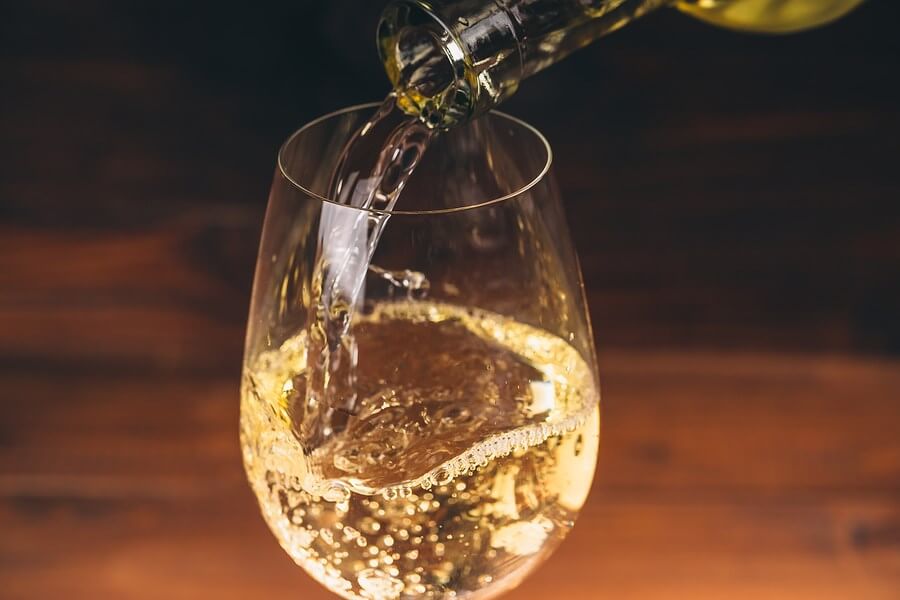The worst event for any wine lover is to waste a bottle, or see it turn to wine vinegar. Leaving even the best of wines uncorked after some days, give wines a sour taste.

Share this article
When souring starts, the wine has an uncharacteristic pungent smell and a sour taste. After a few days, the taste becomes sourer and the smell is usually less strong. No matter what, an opened bottle of wine will turn to vinegar within a week. Wine is best taken when it is corked in the fridge within 2-3 days max, from the day it was initially opened.
By and large, red wines will hold up for about two to three days before the formation of acids in the wine begins. This occur due to the reaction of oxygen in the air with wine – this oxidation process starts the instance a bottle of wine is uncorked. Generally, the oxidation process converts wine that is left open into vinegar within a week. Compared to red wines, white wines last fairly longer when kept in the refrigerator. Either ways, after opening a bottle of wine, take adequate measures to seal it off to prevent entry of air to maintain its fresh taste.
Winemakers are very much aware of the problem souring can cause, as it can ruin any wine (grape, apple, cherry, etc.). Here, the reasons why wine turns into vinegar will be considered and the measures that can be taken to prevent this from happening. While wine turns to vinegar, it can also turn into great health benefits for you personally!
Both homemade wine and factory manufactured wine can turn into vinegar during the manufacturing process or in storage.
The Change To Wine Vinegar:
Acids:
Wine changes to vinegar when air gains entrance into the wine container. With adequate oxygen and a range of temperature between 42-115°F, millions of acetic bacteria that live in fermented wine become active and begins to process the wine spirit into acetic acid and water. The concentration of oxygen and the features of the wine, with respect to the level of temperature, will determine how long the souring process will last, ranging from 3-4 days to about a few weeks. Reduction of wine spirits causes the activity of bacteria to cease.
The formation of acetic acid in wine is the factor responsible for wine turning into vinegar. To confirm this, if you pour acetic acid into a container with fruit drink in it, the fruit drink would instantaneously exhibit the characteristics of vinegar. Acetobacter, a type of bacteria, forms acetic acide. This goes to say that the only way to stop wine from turning into vinegar is by controlling the acetobacter.
Sulfites:
Both homemade wine and factory manufactured wine can turn into vinegar during the manufacturing process or in storage. In order to hinder bacterial activity of acetobacter, winemakers add preservatives. The most common preservatives used in wineries are sulfites. These sulfites vary in forms such as Sodium Metabisulfite, Campden Tablets, or Potassium Metabisulfite. This is because sulfur destroys acetobacter thereby preventing it from producing acetic acid in wine.
However a large quantity of sulfur in wine is hazardous. Also take note to get adequate information about when to add sulfites to wine, and the best method to use. It is also important to make use of cultivated wine yeast to keep fermentation clean. Furthermore, ensuring sanitation of all wine equipment with sulfites and water prior to use.
Makers of homemade wine use anairlock to prevent air flow during fermentation. This device seals off the wine container hermetically. Furthermore, it allows carbon dioxide formed during the fermentation process to flow out. Hermetically corking matured wines once bottled is a crucial step. Afterwards, storage of the wine at low temperatures seals the process.
Pasteurization:
When wine turns into vinegar (i.e., if it goes through acetic acidification), it is impossible to reverse. However, during bottling, some winemakers attempt to prevent acetic fermentation from occurring by way of pasteurization.
Heating bottled wine between 140-150°F and maintaining the temperature for roughly 20 minutes, assures pasteurization. However, there is no guarantee that this method will prevent acidification, as even a little amount of vinegar present in wine can spoil the taste. Wine drinkers generally discard sour wine, or allocate it for use as home made vinegar.
Conclusion:
In conclusion, bacterial activity of acetobacter in wine converts it to wine vinegar. Bring to a halt this bacterial activity and wine will not turn into wine vinegar.